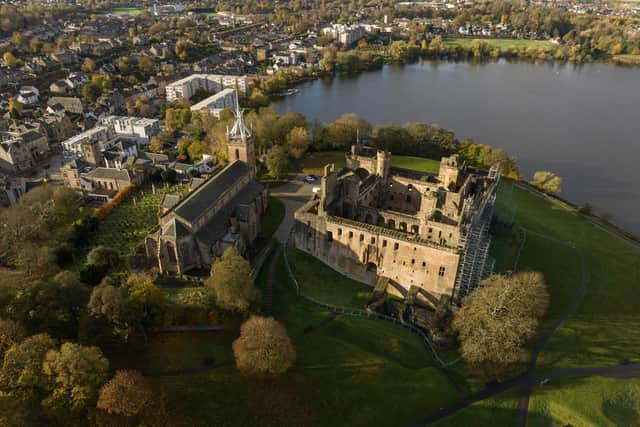Linlithgow Palace: Birthplace of Mary Queen of Scots re-opens after battles with climate change and vandals
The recent history of Linlithgow Palace has been far from smooth, but the birthplace of Mary Queen of Scots is set to open to the public again this weekend on Saturday.
The palace, which served as the holiday home for the Stuart monarchs, has been closed since January last year after engineers picked up more than 50 areas of concern within the buildings structure. Crumbling sandstone had been badly affected in parts by the impact of climate change and extreme weather events.
Advertisement
Hide AdAdvertisement
Hide AdThen, the planned May re-opening was hampered when vandals struck at the landmark when walls, paving and the 16th-century fountain built by James V in the central courtyard were defaced with graffiti. Two teenagers, aged 13 and 14, have been charged in connection with the incident.


While repairs are ongoing to that particular damage, Historic Environment Scotland (HES) has now announced the re-opening of the palace on Saturday. The body said staff had worked “tirelessly” to get the attraction ready to welcome visitors once more amid local concern that tourism in the town had been badly affected by the closure.
Craig Mearns, director for operations at HES, said: “We are very pleased to be able to re-open Linlithgow Palace to the public. Our teams have worked tirelessly, not just to make it a safe and enjoyable place to visit, but also to address the damage that was done to the historic site this spring. That work is still on-going.
“We know that the local community and visitors alike have been eagerly awaiting the re-opening and, as a result of our planned and completed conservation work, this amazing site can be enjoyed by everyone once more.”
Initially a Roman settlement, there has been a royal residence where Linlithgow Palace now sits since the mid-1100s.
The earliest residence was severely damaged by fire and no visible features remain. After returning from captivity in England, James I began work on the new palace in the early 1400s to replace the previous residence.
The palace served as a welcome rest stop for royals between Edinburgh Castle and Stirling Castle, and was frequently in use. The elegant ruins which remain today are the remains of the James I palace that was later enlarged by his descendants. Mary Queen of Scots, daughter of James V, was born here in 1542.
Construction techniques and materials used in the palace’s building and subsequent repairs to the landmark have left the structure particularly vulnerable to the impact of poor weather, it is understood.
Advertisement
Hide AdAdvertisement
Hide AdHES is believed to be among the first heritage bodies to pro-actively face the challenge that climate change presents to its properties.
Some restrictions will remain in place at the palace while improvement work continues, including at the North Quarter, which covers the king’s bed chamber and the court kitchen. This area, which was badly damaged by a fire following the failed 1745 Jacobite rising, that remains a key area of concern.
The Great Hall, Chapel Royal, the King’s hall, the museum, the kitchen, and Queen Margaret’s bower will re-open at the weekend, with visitors encouraged to book ahead of their trip.
Comments
Want to join the conversation? Please or to comment on this article.